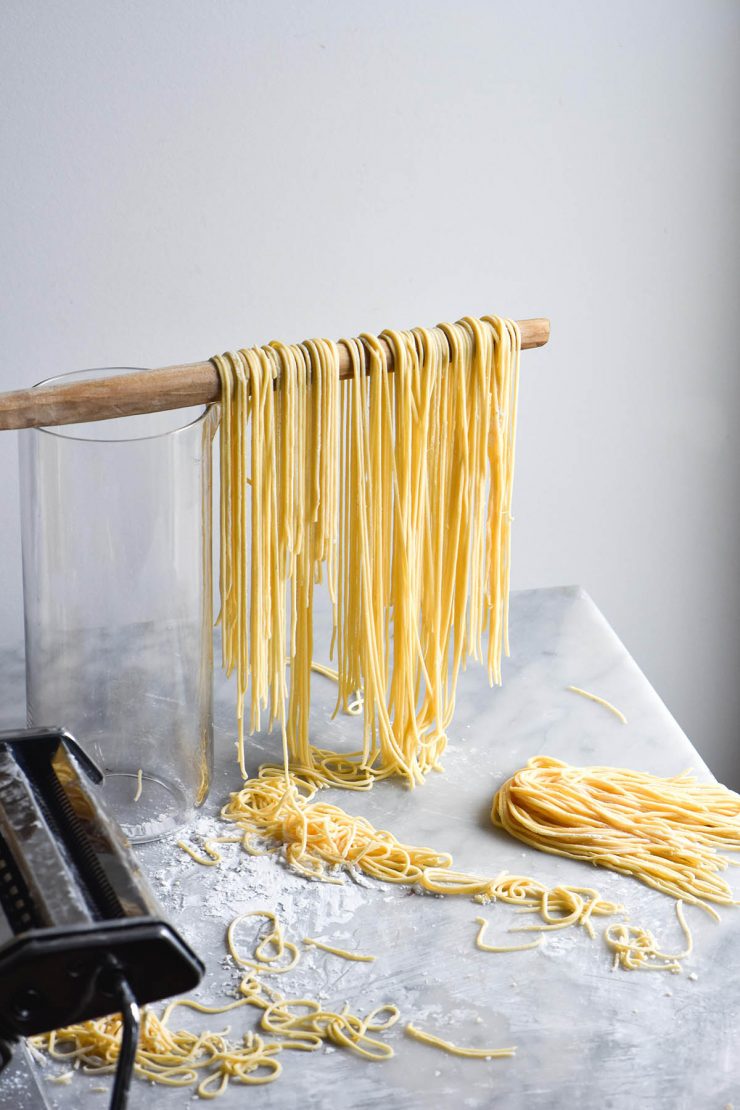
I love noodles in all shapes and forms. Rice noodles, pasta, sweet potato noodles – they’re all easy to buy gluten free and really hit the spot. Sometimes, however, you just want a giant bowl of egg noodles. Today I’m sharing these gluten free egg noodles because they can be find to find at the supermarket.
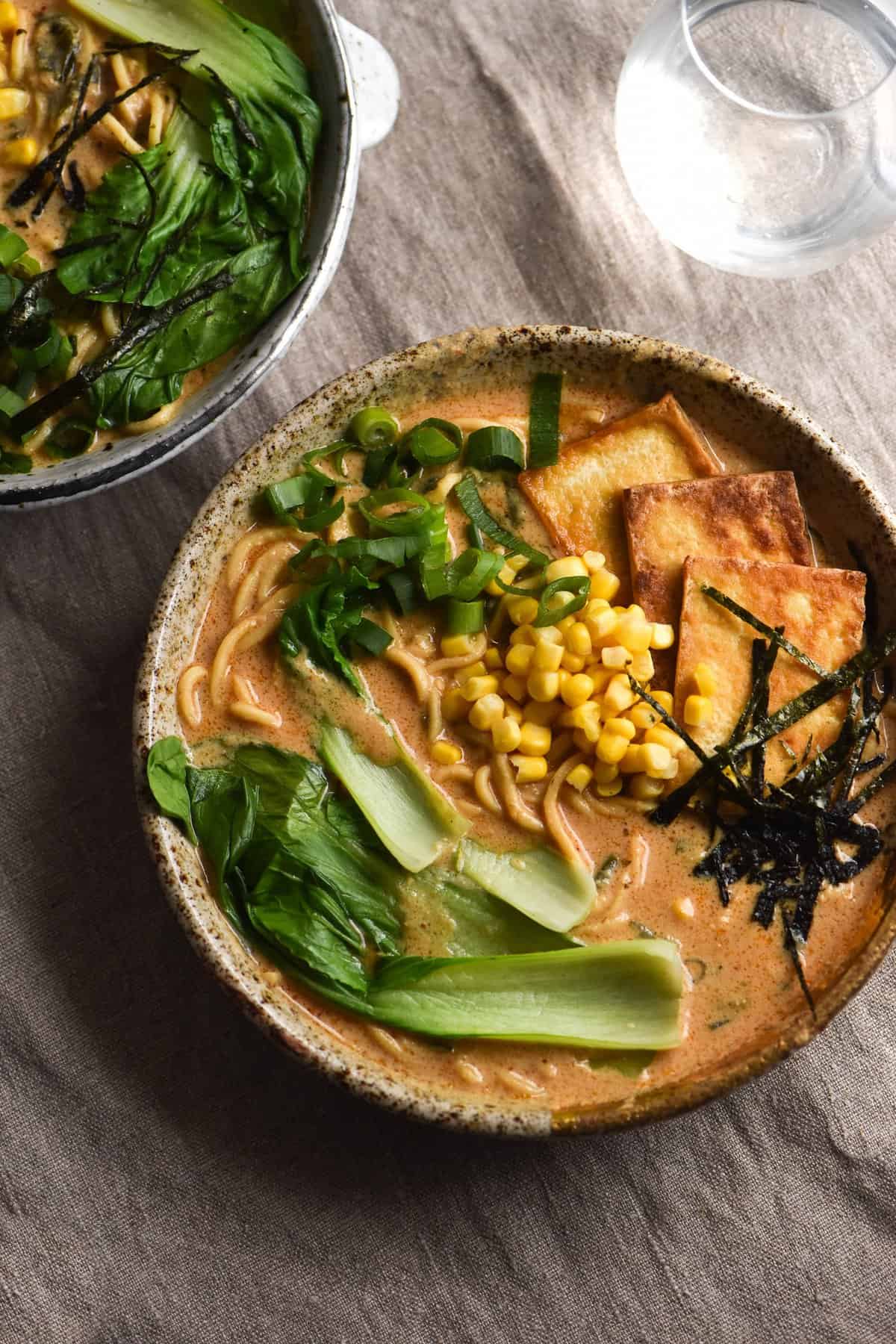
Gluten free egg noodles
This recipe for gluten free egg noodles is inspired by the recipe in my cookbook, Intolerance Friendly Kitchen. They have a secret ingredient in them that really gives them that wheat noodle flavour.
This recipe is equally delicious, but the secret sauce remains in the book. I wanted this recipe to be super customisable, so you can play around with different gluten free flours to see what flavour profile you prefer.
The recipe uses a simple mix of white rice flour, glutinous rice flour, salt, xanthan gum, eggs and water. You can play around with the flour as you see fit, and I’ll give you tips for doing so.
These noodles are delicious fresh, but can also be made a day ahead. Better yet, they fare brilliantly frozen and cooked straight from frozen, so you can make them for future meals.
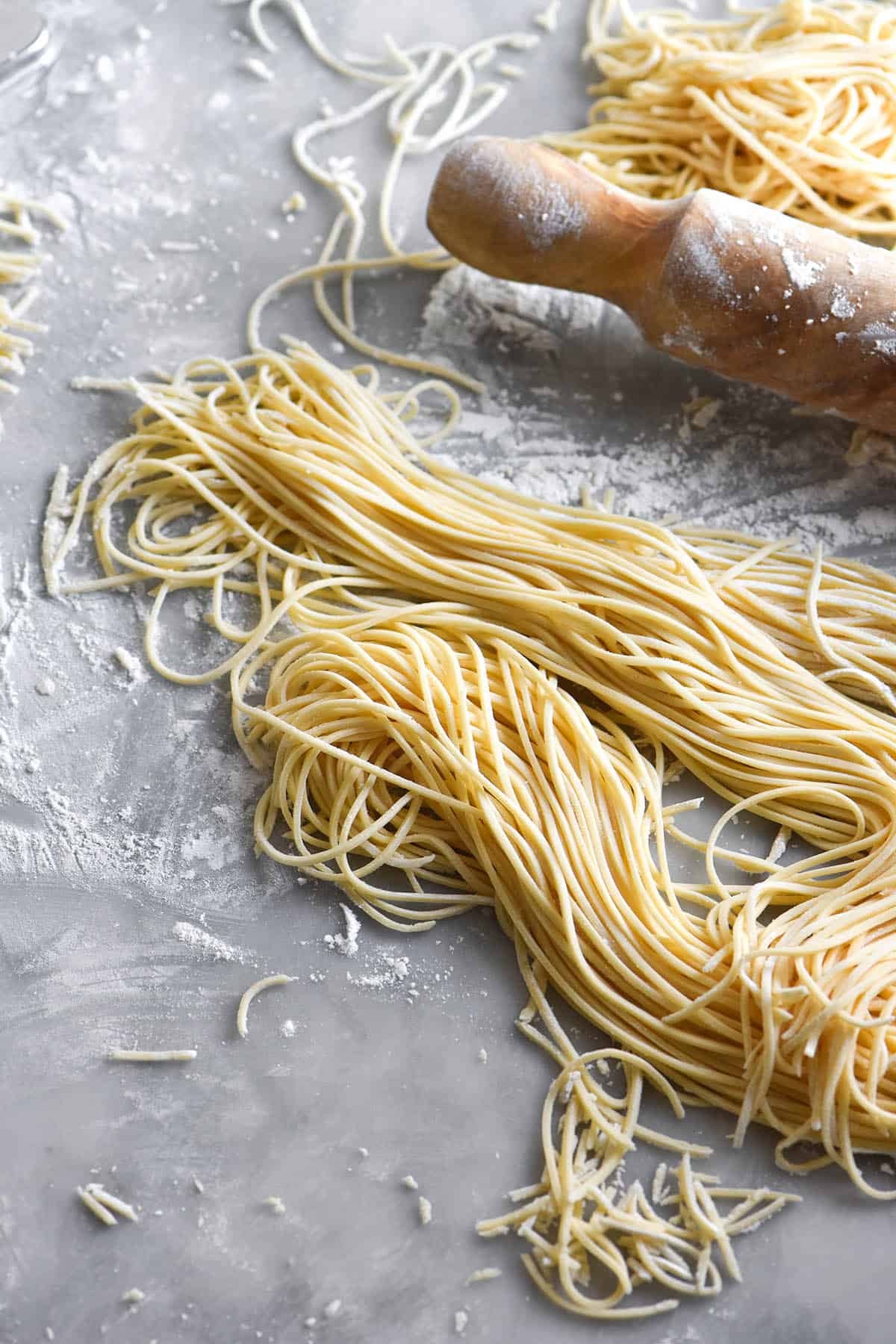
Recipe notes and substitutions
First off: the eggs and xanthan gum are non negotiable ingredients. If you’re looking for an egg free or xanthan gum free pasta/noodle recipe, see the links below. There is also a xanthan gum free pasta recipe in Intolerance Friendly Kitchen and xanthan gum free egg noodles on my site.
I have not tried egg replacements in this recipe and I don’t intend to.
You can play around with the flour and starch as you see fit. An important thing to keep in mind, though, is that rice flour is one of the most absorbent flours. If you attempt to use sorghum in place of rice flour, for example, you’ll need less liquid and quite possibly less egg. If you intend to substitute, you need to pay attention to the dough and add wet ingredients gradually. The xanthan gum will help hold the dough together.
Another recommendation is to keep the starch to wholegrain ratio similar. This doesn’t always apply and you can experiment if you are more advanced at gluten free baking, but it does help with elasticity and a chewy mouthfeel.
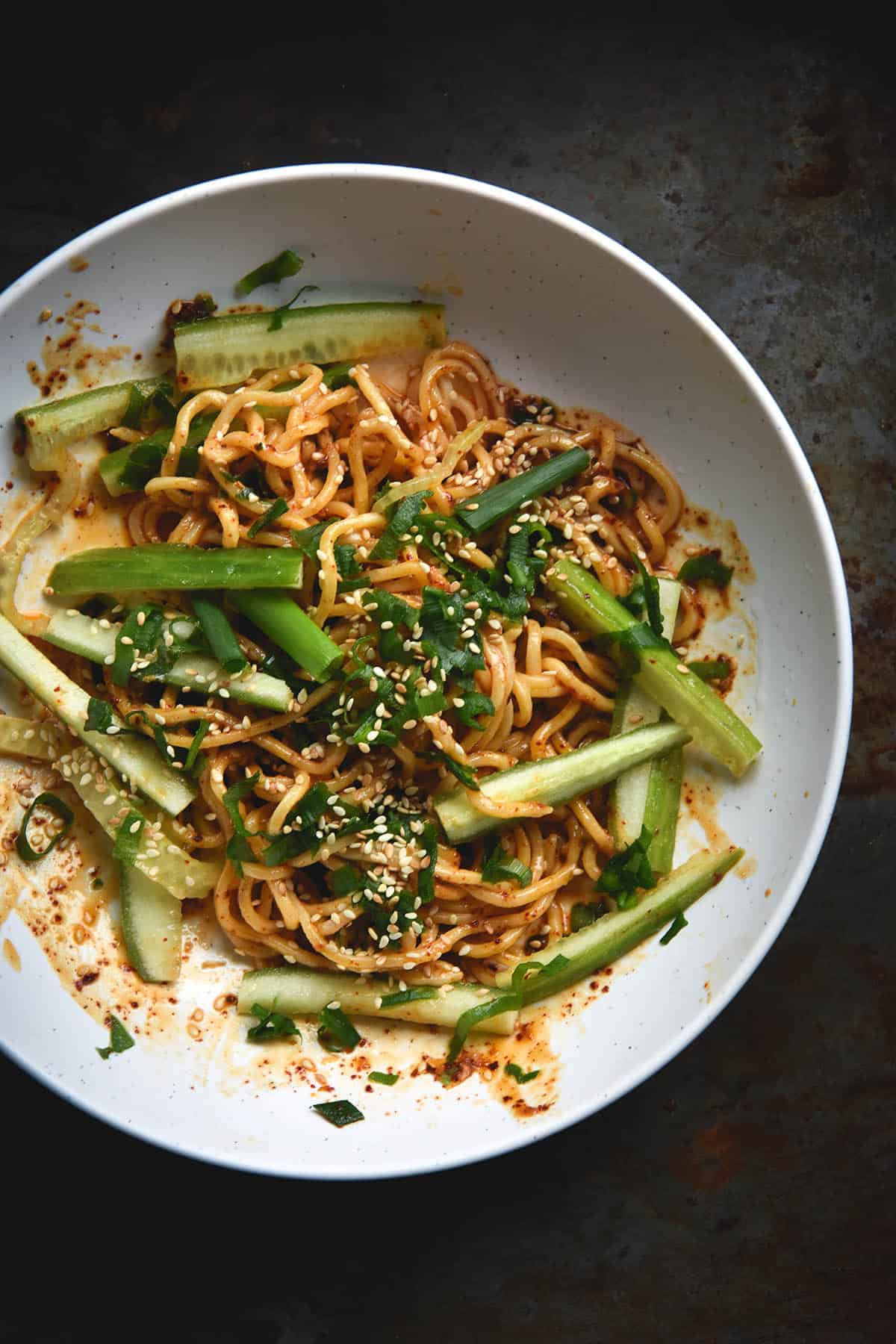
Do I need a pasta machine for these noodles?
I highly, highly recommend one. Personally, I haven’t tried to make this recipe without a pasta machine so I can’t say for sure if it’s an option. I daresay that it would be a tedious process and your noodles might be unpleasantly thick. Using a pasta machine is an easy way to guarantee the noodles are thin and uniform, which means they will cook evenly. Of course, it also means they will be pleasant to eat.
These days, many forgotten pasta machines are available at op shops. You can also buy inexpensive ones that are annoying to use but convenient to have. This is the variety that I have. While it’s not great quality and can absolutely provoke me to anger, it gets the job done better than I ever could.
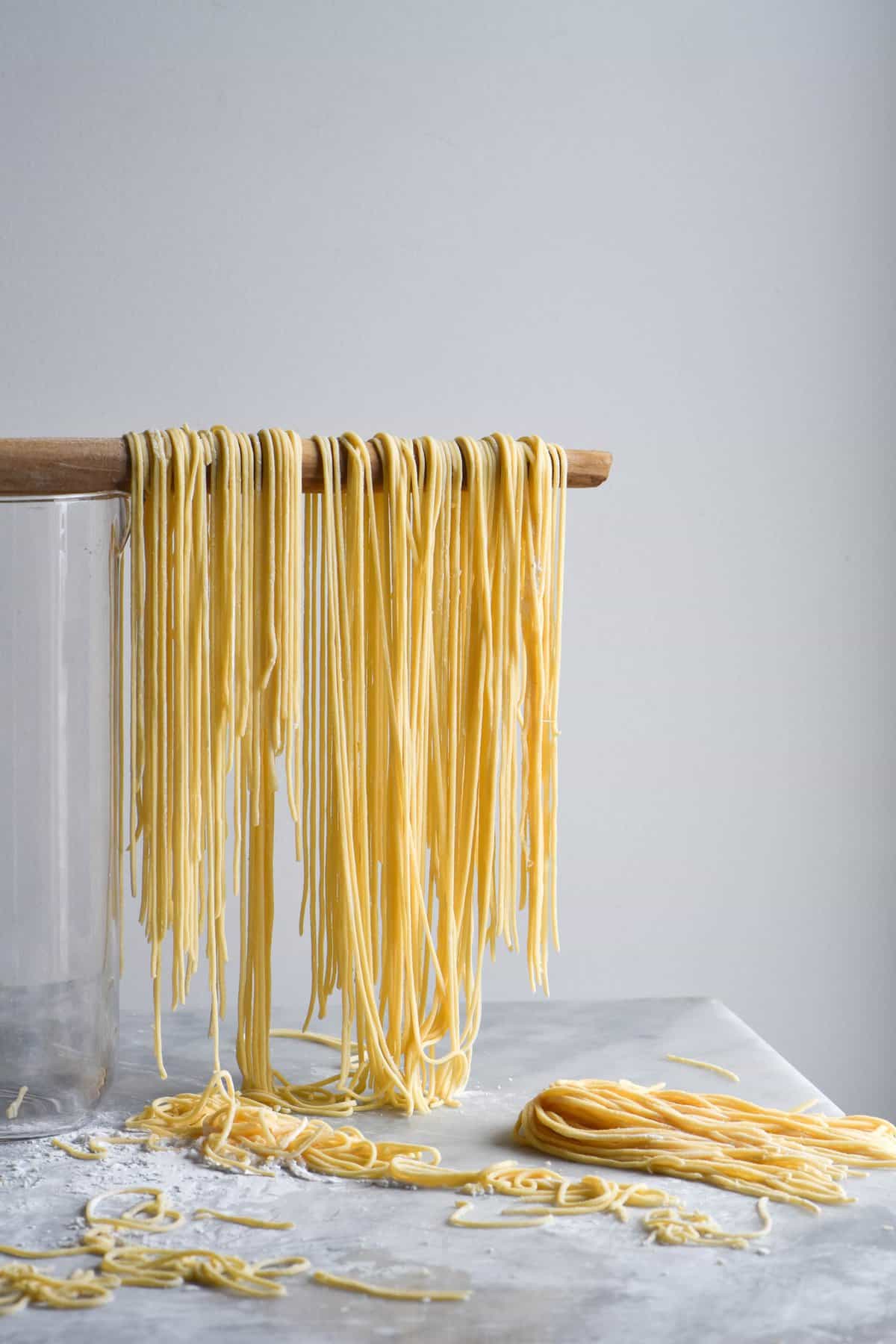
Tips for your gluten free egg noodle dough
Making sure the dough is not too wet is key to any noodle or pasta recipe. A wet dough will be absolutely impossible to roll out, and you will end up adding an ungodly amount of flour to try and course correct it.
I cannot stress this enough: take the liquid measurements in the recipe with a grain of salt. Every bag of flour will have a slightly varied absorbency rate. Every egg will contain a slightly different volume of liquid. Humidity and climate will play a role. What works for me might not work for you, so always add liquid gradually according to your dough. If it looks perfectly moist, stop adding more liquid. Intuition is key for success in gluten free cooking.
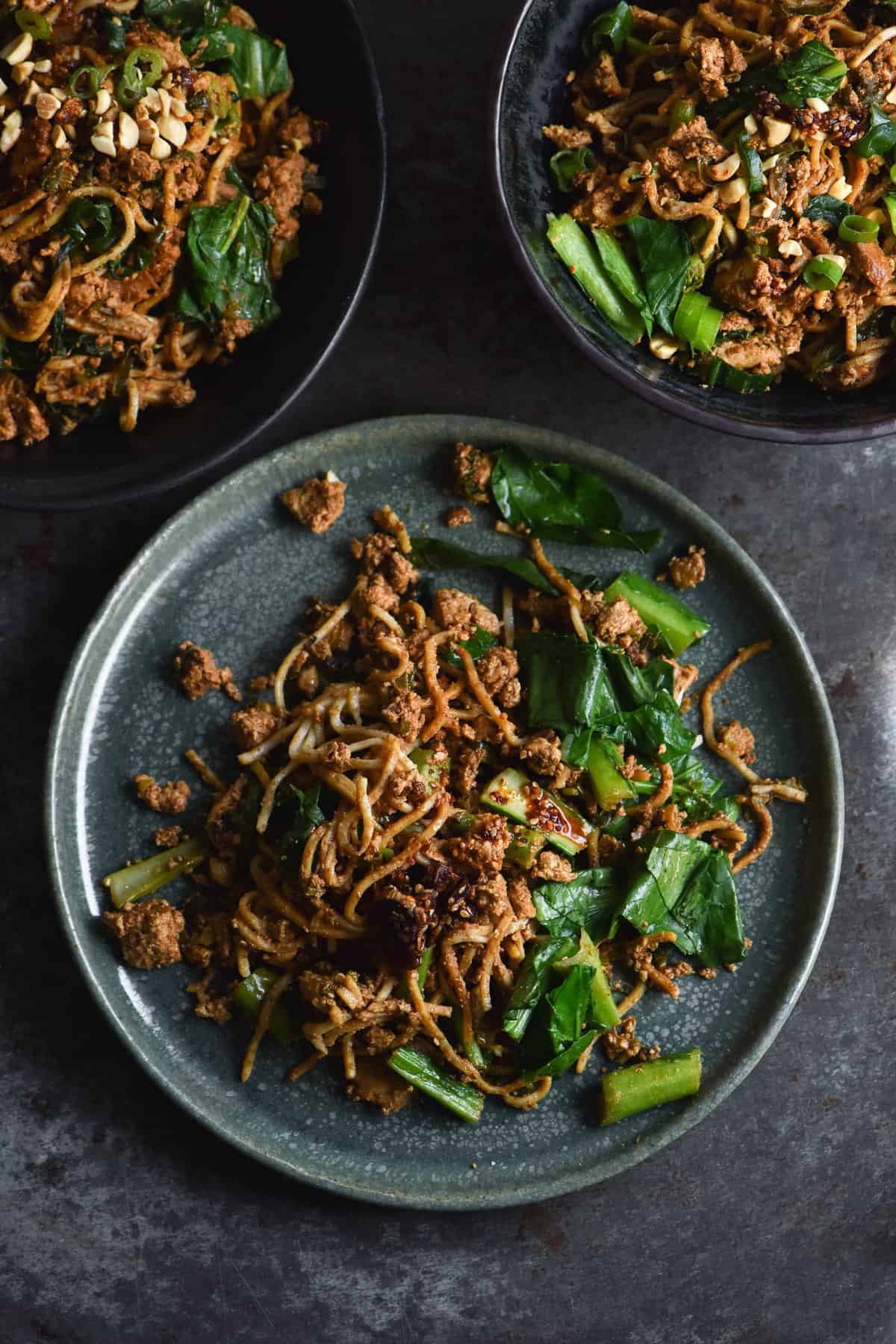
Tips for rolling out your gluten free egg noodles
Tapioca flour/starch is always my choice for rolling out dough. Its easy to find, inexpensive and very soft without any grittiness. I find glutinous rice flour too gritty and potato starch too solid (if that makes sense) for rolling out too. Personally, I think wholegrain gluten free flours (like rice or buckwheat) for rolling out are too gritty and leads to a textured dough which is harder to put through the machine.
Make sure the bench is liberally floured. This will ensure the dough doesn’t get stuck as you roll it out. This is particularly important if you have added too much liquid to your dough. You’ll need a considerable amount of tapioca flour to course correct to a drier dough.
The dough rolls out nicely, so I like to roll it to a width that will get through the pasta machine’s finer settings. I think working and working gluten free dough through a machine to be thin enough to cut is cumbersome and ends up being more work. Half the time it tears and you have to redo it, anyway.
I like to trim the scrappy edges off each long rolled out piece of dough. I then use water to moisten the scrappy bits and restore them to their former glory.
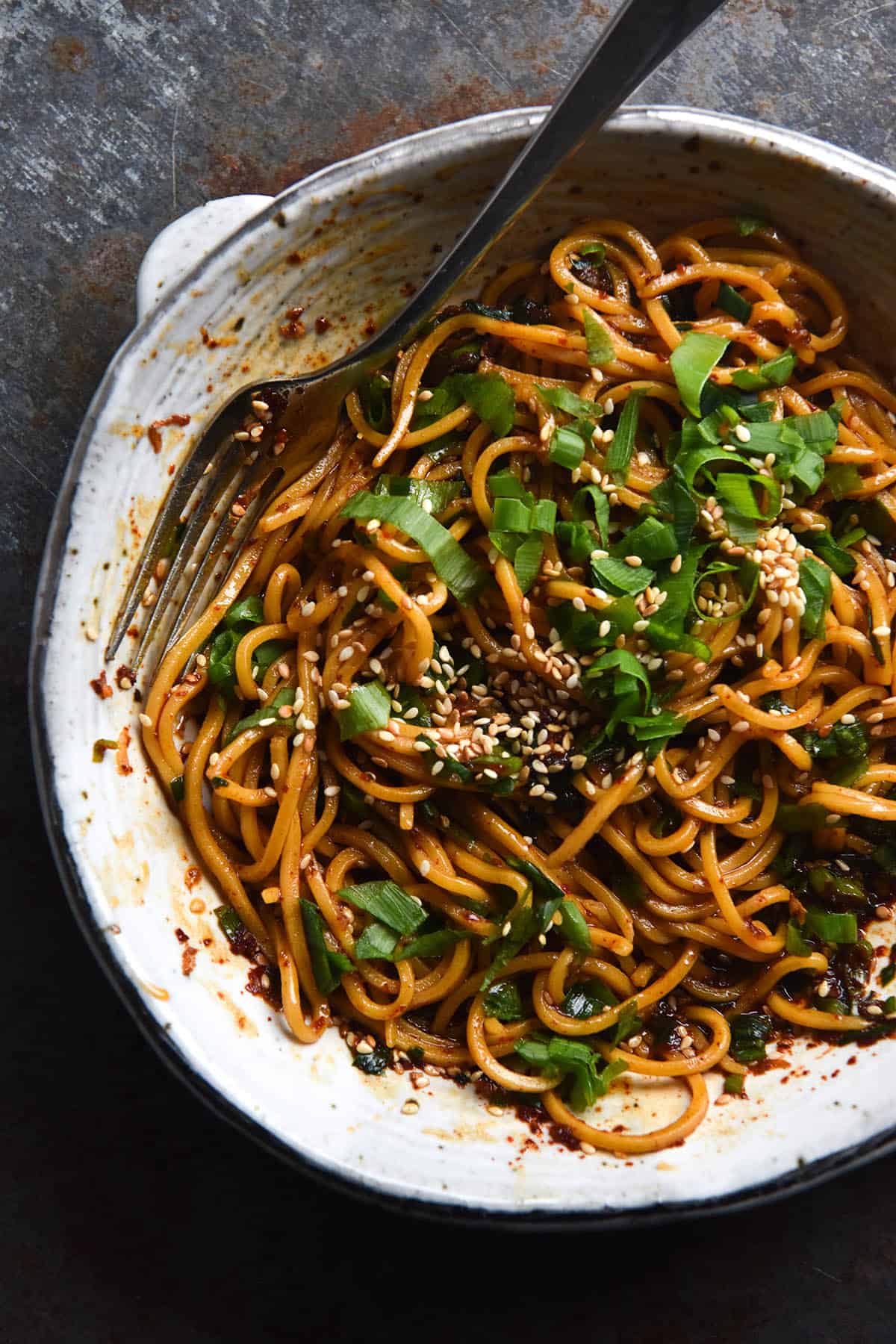
More gluten free noodle recipes
- The gluten free egg noodles in Intolerance Friendly Kitchen
- Gluten free soba noodles
- Vegan, gluten free and xanthan gum free soba noodles
- Gluten free egg pasta
- Gluten free beetroot pasta
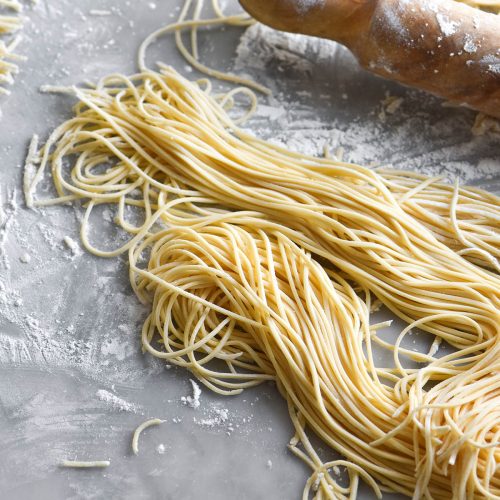
Gluten free egg noodles
Equipment
- Pasta machine with thin pasta cutting attachment
Ingredients
For the pasta:
- 160-200 g (1 – 1 1/4 cup) fine white rice flour
- 60 g (1/2 cup) tapioca flour
- 3 g (1 teaspoon) xanthan gum
- 3 extra large eggs whisked
- 5 ml (1 teaspoon) oil
- 10 ml (2 teaspoons) water or just to bring together into a ball
To finish:
- Tapioca flour for rolling
Instructions
- Add the flours and xanthan gum to a medium bowl and use a fork to combine. Add the eggs and oil continue mixing until most of the egg has been incorporated.
- Get your hands in there and thoroughly squelch the dough through until mostly smooth. Add the water, a teaspoon at a time, until you have a firm ball but smooth of dough and no errant bits of flour left in the bowl. Cover the dough and allow to rest for 5-10 minutes.
- Generously flour your workbench and rolling pin with tapioca flour. Tear about a golf ball size dough off at a time and use your rolling pin to flatten it sufficiently for the thickest setting of your pasta machine. Once it goes through smoothly, place it on the next lowest setting to begin thinning the dough out.
- As I mentioned, I like to cut this dough while reasonably thickly so that my noodles are thicker. When you are happy with the thickness (keeping in mind that they expand during cooking) thread the pasta sheet through your spaghetti cutter. Repeat this process until you have used all the dough.
- To cook the noodles, bring a really well salted medium pot of water to the boil. Add the noodles and cook for 2-3 minutes. Test a noodle and see if they are done to your liking and go from there. Drain when cooked, then serve with your sauce or toppings of choice.
- You can keep cooked noodles in the fridge for a few days, or freeze uncooked noodles. To do this, pile them into nests and freeze them in an airtight container. Cook them straight from frozen, allowing a little extra cooking time.
Notes
- Noodles keep well for a day or two in an airtight container in the fridge. They can also be frozen and cooked straight from frozen.
- See the body of the post for substitution options and gluten free vegan noodle recipes.

Any tips for where to buy rice and tapioca flour that don’t have a may contain on the packet? It seems everything I’ve found isn’t strictly gluten free 🙁
Hi Emma, have you tried Ceres Organics or Erawan brand? Neither brand seems to have a may contain label from my googling.
Which brands have you tried?